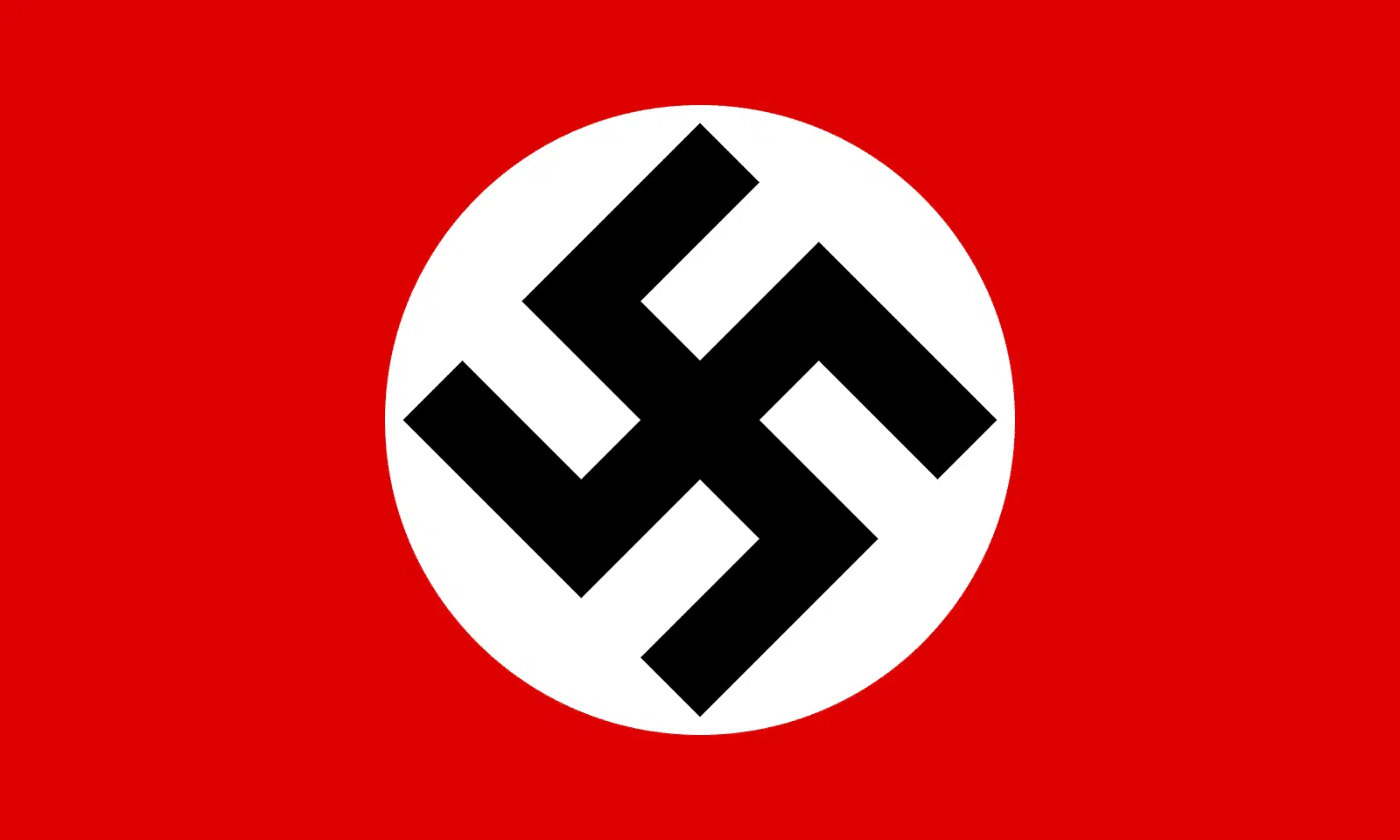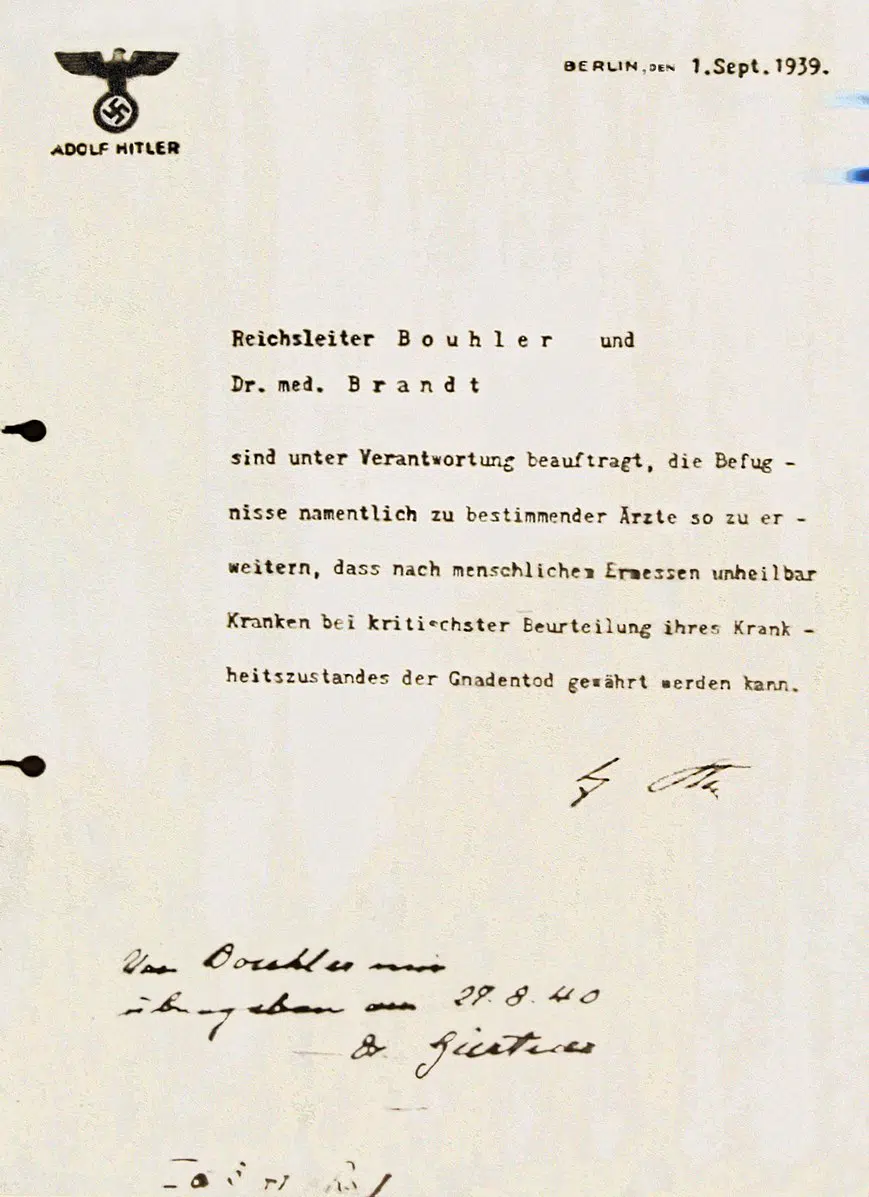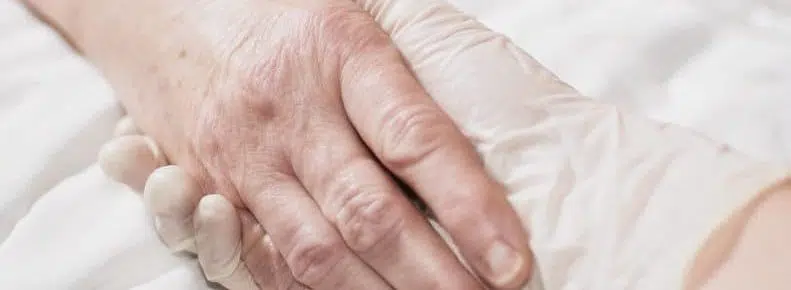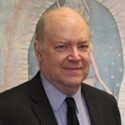The Hippocratic Oath… is an honorable historical document, which, however, does not altogether fit present times. If it is to be applied today, the wording has to be changed very extensively, and in these reformulations a series of new oaths have been drawn up which have only a vague relationship to the ancient Hippocratic Oath…. a [theory of] medicine based on the principle of nil nocere [“do no harm”] is a very impoverished medicine, and we are unfortunately not in a position to carry on medicine on that simple principle today.
― Dr. Georg Weltz, responsible for the Nazi “cold experiments”1
Many people believe that the sordid history of Nazi Germany’s euthanasia program is irrelevant to the current situation in the United States. They usually claim that “it could never happen here!” However, a brief review of events in Europe during the first half of the 20th century should give us pause, because it could happen here ― and, in fact, it is happening here.
There is one lesson that we must learn from the German euthanasia/eugenics horror. It is pivotal. It is absolutely basic. It is that all euthanasia begins with an infinitely small, wedged-in lever.
Psychiatrist Dr. Leo Alexander served on the staff of the Chief Counsel for Nazi War Crimes at Nuremberg. He originated this “wedged-in lever” phrase when he said:
Whatever proportions these crimes finally assumed, it became evident to all who investigated that they had started from small beginnings. The beginnings at first were merely a subtle shift in emphasis in the basic attitude of the physicians. It started with the acceptance of the attitude, basic in the euthanasia movement, that there is such a thing as life not worthy to be lived.
This attitude in its early stages concerned itself merely with the severely and chronically sick. Gradually, the sphere of those to be included in this category was enlarged to encompass the socially unproductive, the ideologically unwanted, the racially unwanted, and, finally, all non-Germans. But it is important to realize that the infinitely small wedged-in lever from which this entire trend of mind received its emphasis was the attitude toward the nonrehabilitable sick.2
Most Americans think that the Holocaust began and ended with the extermination of Jews. This is a grossly incomplete view of this portion of German history, so a short review may help us understand both this history and how it mirrors what we are seeing today. It is revealing to compare the “progress” of euthanasia in Nazi Germany and the United States in order to highlight their striking similarities.
Step 1: Prepare Society for Euthanasia
Before any social movement can succeed, it must first convince the elite to support its primary objective(s) ― and then it must set about convincing a sufficient number of ordinary citizens that its agenda is necessary in the name of human freedom and progress. The corruption of the media is absolutely essential in order for this process to succeed. In the United States, this strategy has already worked brilliantly with birth control, abortion, divorce, pornography, homosexual “marriage,” and transgender rights. In other words, it is necessary that people adopt a herd mentality and firmly believe that they are serving some greater good.
After the Nuremberg War Crimes Trials, various authors referred to the “Eichmann Effect,” where a person “is willing to commit atrocities he would not normally commit when he sees himself as merely an instrument of some higher authority.”3
This effect also occurs when physicians deceive themselves into thinking that they are merely doing the will of society by eliminating those who are a “burden” to it.
Nazi Germany
In 1877, the German biologist and philosopher Ernst Heinrich Haeckel wrote Lebenswunder [“Life Miracles”], which contained one of the first modern-day references to utilitarian or “economic” euthanasia in Western literature: “What a tremendous sum of pain and grief … what losses of property, private and public, could be spared, if only people would decide at last to release the absolutely incurable from their unspeakable ills with a dose of morphine.”
In 1895, Dr. Adolf Jost published his book Das Recht Auf den Tod [“The Right to Death”]. He outlined for the first time the “slippery slope” theory as it applies to euthanasia, a strategy still copied by euthanasiasts today: “Of course, at first, strict limitations must be respected. For example, the right to die of lunatics will only come into consideration later, because consent of the patient is of course lacking, and this circumstance could easily, at least at the beginning of reform, be a disadvantage.”
In 1904, thirty years before the beginning of the practice of large-scale euthanasia in Germany, Dr. Haeckel asked, “What good does it do to humanity to maintain artificially and rear the thousands of cripples, deaf-mutes and idiots? Is it not better and more rational to cut off from the first this unavoidable misery which their poor lives will bring themselves and their families?”4
The United States
During the pre-World War II push for euthanasia and eugenics, activists on both sides of the Atlantic not only shared the same ideas, but often communicated and cooperated with each other.
Charles E. Nixdorff, treasurer of the Voluntary Euthanasia Legalization Society, restated Dr. Jost’s “slippery slope” theory when he wrote that the Society’s proposals were limited only to voluntary euthanasia ― at first. He
…explained to some of the members who desired to broaden the scope of the proposed law, that it was limited purposely to voluntary euthanasia because public opinion is not ready to accept the broader principle. He said, however, that the Society hoped eventually to legalize the putting to death of non-volunteers beyond the help of medical science.5
In 1972, thirty years before the latest push for euthanasia gained momentum in the United States, State Representative Walter W. Sackett Jr., M.D., proposed a euthanasia bill for consideration by the Florida legislature. This bill was a concrete expression of Sackett’s concern that the State of Florida was spending far too much money on the ill, especially Down syndrome children: “Five billion dollars could be saved in the next half-century if the State’s mongoloids were permitted merely to succumb to pneumonia ― a disease to which they are highly susceptible.”6
The following year, American Nobel Prize laureate James Watson echoed the German Dr. Haeckel when he claimed that “Most birth defects are not discovered until birth. If a child were not declared alive until three days after birth, the doctor could allow the child to die if the parents so chose and save a lot of misery and suffering. I believe this view is the only rational, compassionate attitude to have.”
The members of the media have both a well-developed sense of moral righteousness and a blindness to evil as it is perpetrated in their own time. In the USA, the media’s role in promoting euthanasia mirrors that of the Nazis to an uncanny degree. It is almost as if American media leaders simply plagiarized the plots from Nazi movies and television programs. For example, Goebbel’s propaganda film Ich Klage An (“I Accuse”) was released in 1941. This “docudrama” portrayed a woman suffering from multiple sclerosis who was “mercifully” euthanized by her loving husband to the accompaniment of soft, soothing piano music. In 1987, ABC released its propaganda film “When the Time Comes,” in which a woman suffering from cancer was “mercifully” euthanized by her loving husband to the accompaniment of soft, soothing piano music.7
Step 2: Dehumanizing the Victims
The first step towards the legalization of euthanasia is the launch of a saturation propaganda campaign with the eager assistance of the media. The second step is to dehumanize the target populations.
Most societies consider it morally repugnant to exterminate those who are recognized as human beings, so the elderly and ill must be demoted from persons to non-persons.
Nazi Germany
It is significant that anti-Semitism flourished simultaneously in both the early American and Nazi euthanasia movements. Leaders of the Nazi eugenics/euthanasia movement referred to Jews as “human ballast,” “garbage,” “human weeds,” “empty shells,” and “infections,” and believed that Jews and others not of Aryan quality “had to be treated like tuberculosis bacilli, with which a healthy body may become infested. This was not cruel, if one remembers that even innocent creatures of nature, such as hares and deer, have to be killed so that no harm is caused by them.”8
In his book Mein Kampf (“My Struggle”), Adolf Hitler referred to Jews as “maggots in a rotting corpse;” “a plague worse than the Black Death;” “mankind’s eternal germ of disunion;” “drones in the human hive;” “spiders sucking blood out of the people’s pores;” “a pack of rats eating one another;” “the eternal bloodsucker;” “the vampire of peoples;” and “a harmful bacillus that spreads,” among many other degrading terms.
The Nazis referred to their extermination of the Jews as “resettlement;” “evacuation;” “clearing the area(s) of Jews;” “cleansing,” “disinfection,” “special treatment,” “moving to labor in the East,” “injecting off,” “putting to sleep like animals,” “discharging,” “the clean-up of the Jewish question,” and “the final solution to the Jewish question.”9
The United States
In the mid-1930s, the pathologically anti-Semitic American Madison Grant argued that “sentimental beliefs” [such as Christianity] short-circuited the practice of infanticide, which he saw as a natural weeding-out process necessary to the “preservation of the [human] species.”10
Charles Davenport, another prominent American eugenicist, fumed, “Our ancestors drove Baptists from Massachusetts Bay into Rhode Island, but we have no place to drive the Jews to. Also, they burned the witches, but it seems to be against the mores to burn any considerable part of our population.”10
Today, euthanasiasts routinely refer to profoundly handicapped people as “vegetables,” “mere collections of organs,” “post-human,” and “technological artifices.” Persons in intensive care units (ICUs) whom physicians consider “hopeless cases” are called “GORKs” (God Only Really Knows) or “GOMERs” (Get out of My Emergency Room).
Step 3: Testing the Waters
The leaders of a social movement are constantly polling the populace in order to measure their attitudes. When they consider the time right, they test their theories in the real world ― always on the hardest of cases at first ― to see what the media and public reaction will be.
Nazi Germany
In 1935, Adolf Hitler convened a series of high-level conferences to discuss the possibility of establishing programs for liquidating the “incurably ill.” Just a couple of months later, the first large-scale murders of helpless people by the Nazi regime occurred when twelve mental patients were involuntarily euthanized at Hadamar. Three years after that, the baby boy Knauer of Leipzig was born blind and missing part of one arm and one leg. He was the ideal test case for Germany’s euthanasia/eugenics program. Hitler’s personal physician, Karl Brandt, murdered the child. The German euthanasiasts carefully observed the reaction of the judicial system and the media to this murder.
It was positive.
The United States
In 1967, euthanasia societies in the United States began to hold high-level conferences for the purpose of discussing the liquidation of “human vegetables” and the “incurably ill elderly.” Twenty years later, the first large-scale murders of helpless people by American euthanasiasts occurred when eight elderly persons were starved to death at a nursing home in Galveston, Texas. In 1982, Baby Doe of Bloomington, Indiana, was born with an esophagal defect and spina bifida, both of which are surgically correctible. He was the ideal test case for America’s euthanasia/eugenics program. The baby was allowed to die of thirst and starvation. The euthanasaists carefully observed the reactions of the judicial system and the press to this murder.
It was positive.
Step 4: Disguising the Motives for Euthanasia
Once the euthanasia program picks up steam and people begin to die by the thousands, organized opposition inevitably arises. Therefore, pro-euthanasia groups launch a dual-purpose propaganda program specifically designed to both portray themselves as rational and philanthropic, and to present their opponents as irrational and selfish.
These propaganda tools emphasize the benefits of euthanasia to the populace in general by helping to alleviate overpopulation. They also make always-vague promises that euthanasia will enable great advances in medical science to occur.
Nazi Euthanasia
A primary concern of the Nazis was euthanasia for the purpose of expanding Lebensraum ― “living space,” all for the good of Das Volk, of course.
The Nazis did not want the bodies of their victims to go to waste, so they salvaged their organs for the purposes of medical research that was touted as having the potential to provide vast medical benefits for all. As one of many examples, Nazi doctor Julius Hallervorden said to his concentration camp guards: “If you are going to kill all these people, at least take the brains out so that the material may be utilized.”11
Nazi and American euthanasiasts even share the same language. By the end of World War II, a quarter of a million people had been exterminated under the euphemisms Den Recht Auf den Tod (“the right to die”), Todhilfe (“aid in dying”), and Gnadentod (“mercy killing” or “good [dignified] death”) ― the exact words used by all American pro-euthanasia groups today.12
For an example of the Nazis using this kind of language, see the short directive signed by Adolf Hitler on September 1, 1939, authorizing his physicians to broaden the pool of those eligible for a “mercy death.” The complete text of the order reads as follows:
ADOLF HITLER
Berlin, 1 September 1939Reichsleiter Bouhler and Dr. Med. Brandt are instructed to broaden the powers of physicians designated by name, who will decide whether those who have — as far as can be humanly determined — incurable illnesses can, after the most careful evaluation, be granted a mercy death.
(signed)
Adolf Hitler”
American Euthanasia
Many American pro-euthanasia doctors would also like to eliminate “useless eaters,” and not just in our own country. Dr. Robert H. Williams of the University of Washington Medical School has said, “Planning to prevent overpopulation of the earth must include euthanasia, either negative or positive.”13
In his ominously-named book The Case for Compulsory Birth Control, Edgar R. Chasteen stated darkly, “Soon the world may well be engulfed by indescribable horrors as these nations of the starving are crushed under the weight of their teeming populations.”14
Some American doctors are following the lead of their Nazi forerunners and are now proposing a “dissent form” approach to organ donation. These laws allow doctors to ransack any or all of the organs of those people who have not indicated a contrary wish in “Living Wills” or other legally-binding documents. In 1988, Nevada became the first state to adopt this “dissent form” approach to organ donations.
The implications of this type of approach for medical experimentation are obvious. What euthanasia “doctor” could resist the opportunity to remove organs from a victim scheduled to die at a particular time? San Diego University Professor Ron Westover has asked, “If subjects are needed to render accurate knowledge about the workings of the human mechanism, there is an endless supply. Take the extreme elderly, the senile, use the criminally insane, rapists and murderers. They are largely useless and doomed anyway.”15
Final Thoughts
It is certainly not necessary to make vague statements or insupportable comparisons between the German experience of euthanasia and the one that we are currently undergoing in the United States. We have hard quotes and facts to show that the progression is identical to that of Nazi Germany.
Pro-euthanasia activists are genuinely outraged at the comparison between their activities and those of the Nazi eugenicists. Just like pro-abortionists, they will do everything they possibly can to distract attention from their activities to tangential topics.
But the facts speak eloquently for themselves.
The lesson to be learned from all of this is as clear as mountain air. If the widespread killing of the handicapped and “useless” had been effectively opposed by ordinary Germans, there would have been no Holocaust. This is a lesson from history that is especially important for us ordinary Americans to heed as the process begins again in our own nation. Nazi Germany offers us a stern lesson ― and so far, we have ignored it.
Although the sequence of events in Belgium, the Netherlands and the United States is not precisely the same as that of Nazi Germany, it is obvious from these events that we have already traveled far down the road to “euthanasia on command.”
The primary lesson we must learn from these progressions is that a certain utilitarian attitude towards human life will inevitably lead to a definite progression in euthanasia that is all but set in concrete. Thus, it comes as no surprise that many Nazi and American quotes are almost identical.
+ Endnotes
[1] Dr. Georg August Weltz. Quoted in The United States v. Brandt, et al. The Medical Cases, American Military Tribunal, Nuremberg. Wille in direct examination of Weltz, May 7, 1947, pages 7,131-7,134. Also quoted in Herbert Ratner, M.D. “The Slide toward ‘Mercy-Killing.'” Child and Family Reprint Booklet Series, 1987, page v.
[2] Leo Alexander, M.D. “Medical Science under Dictatorship.” The New England Journal of Medicine, July 14, 1949, pages 39 to 47. This superbly-written summary of the medical horrors inflicted by Nazi “doctors” on their victims is available as Reprint #605 from the Institute of Society, Ethics and the Life Sciences (The Hastings Institute), Hastings-on-Hudson, New York, 10706. Also quoted by Nat Hentoff in “The ‘Small Beginnings’ of Death.” Human Life Review, Spring 1988.
[3] W.L. Gardiner. Psychology: A Story of a Search (Philadelphia: Brooks/Cole Publishers), 1970, page 41.
[4] Dr. Ernst Haeckel. The Wonders of Life: A Popular Study of Biological Philosophy. 1904, page 124. Re-published by CreateSpace Independent Publishing Platform in 2014.
[5] “’Mercy’ Death Law Proposed in State: Euthanasia Society Drafts Bill to Legalize Painless Killing of Incurables.” The New York Times, January 27, 1939.
[6] M. Therese Lysaught, Joseph Kotva, Stephen E. Lammers and Allen Verhey [editors]. On Moral Medicine: Theological Perspectives on Medical Ethics (Grand Rapids, Michigan: Wm. B. Eerdmans Publishing), 2012.
[7] These events and quotes are described in William Brennan. The Abortion Holocaust: Today’s Final Solution (St. Louis: Landmark Press), 1983.
[8] As described in Father James Tunstead Burtchaell. “The Holocaust and Abortion.” Supplement to the newsletter of the Catholic League for Religious and Civil Rights, Volume 9, Number 11.
[9] James Tunstead Burtchaell. “The Holocaust and Abortion.” Supplement to the newsletter of the Catholic League for Religious and Civil Rights, Volume 9, Number 11. Also see the dehumanizing terms used by pro-abortionists Rebecca Chalker and Carol Downer in their book A Woman’s Book of Choices: Abortion, Menstrual Extraction, RU-486 (New York City: Four Walls Eight Windows Press), 1992.
[10] Allen Chase. The Legacy of Malthus: The Social Costs of the New Scientific Racism (Chicago: University of Illinois Press), pages 69, 103, 349, and 635.
[11] Nazi doctor Julius Hallervorden, during Nuremberg trials, quoted in William Brennan. The Abortion Holocaust: Today’s Final Solution (St. Louis: Landmark Press), 1983.
[12] Robert J. Lifton. The Nazi Doctors (New York City: Basic Books), 1986.
[13] Robert H. Williams, M.D., Professor of Endocrinology at the University of Washington School of Medicine. “Numbers, Types and Duration of Human Lives.” Northwest Medicine, July 1970, page 493.
[14] Edgar R. Chasteen. The Case for Compulsory Birth Control (Englewood Cliffs, New Jersey: Prentice-Hall), 1971. Chasteen’s suggested law mandating sterilization and birth control is shown on the back cover of the book. It reads as follows:
As of January 1, 1975, it shall be unlawful for any American family to give birth to more than two children. Any family already having two or more natural children on that date shall not be allowed to give birth to another. Toward this end, it is hereby lawfully determined that all Americans above the age of 10 years will, at least one year prior to the aforementioned date, present himself/herself for reversible immunization against fertility at a local county health department or physician’s office. An official “Certificate of Immunization” shall be issued to and in the name of each citizen so treated. Said certification shall be signed by the authorized medical practitioner who administers the immunization, and shall be entered into the official records of the county in which immunization occurred. After marriage, any citizen may present himself/herself at a local county health department or physician’s office and obtain a fertility restorer. At the birth of the second child, immunity against fertility shall be readministered to both parents. If the first birth shall be multiple, no other births shall be permitted to that mother, and both parents shall thereupon be re-immunized.
[15] San Diego University Professor Ron Westover in a letter to the Los Angeles Times. Described in the July 1985 American Spectator.
Related Content
Dr. Brian Clowes has been HLI’s director of research since 1995 and is one of the most accomplished and respected intellectuals in the international pro-life movement. Best known as author of the most exhaustive pro-life informational resource volume The Facts of Life, and for his Pro-Life Basic Training Course, Brian is the author of nine books and over 500 scholarly and popular articles, and has traveled to 70 countries on six continents as a pro-life speaker, educator and trainer.


















Why no mention of the COVID Pandemic and the way the US neofascist “Christian” political right justifies it by saying “we can’t impede “freedom” just to save hte lives of some useless old people who are just parasites”?